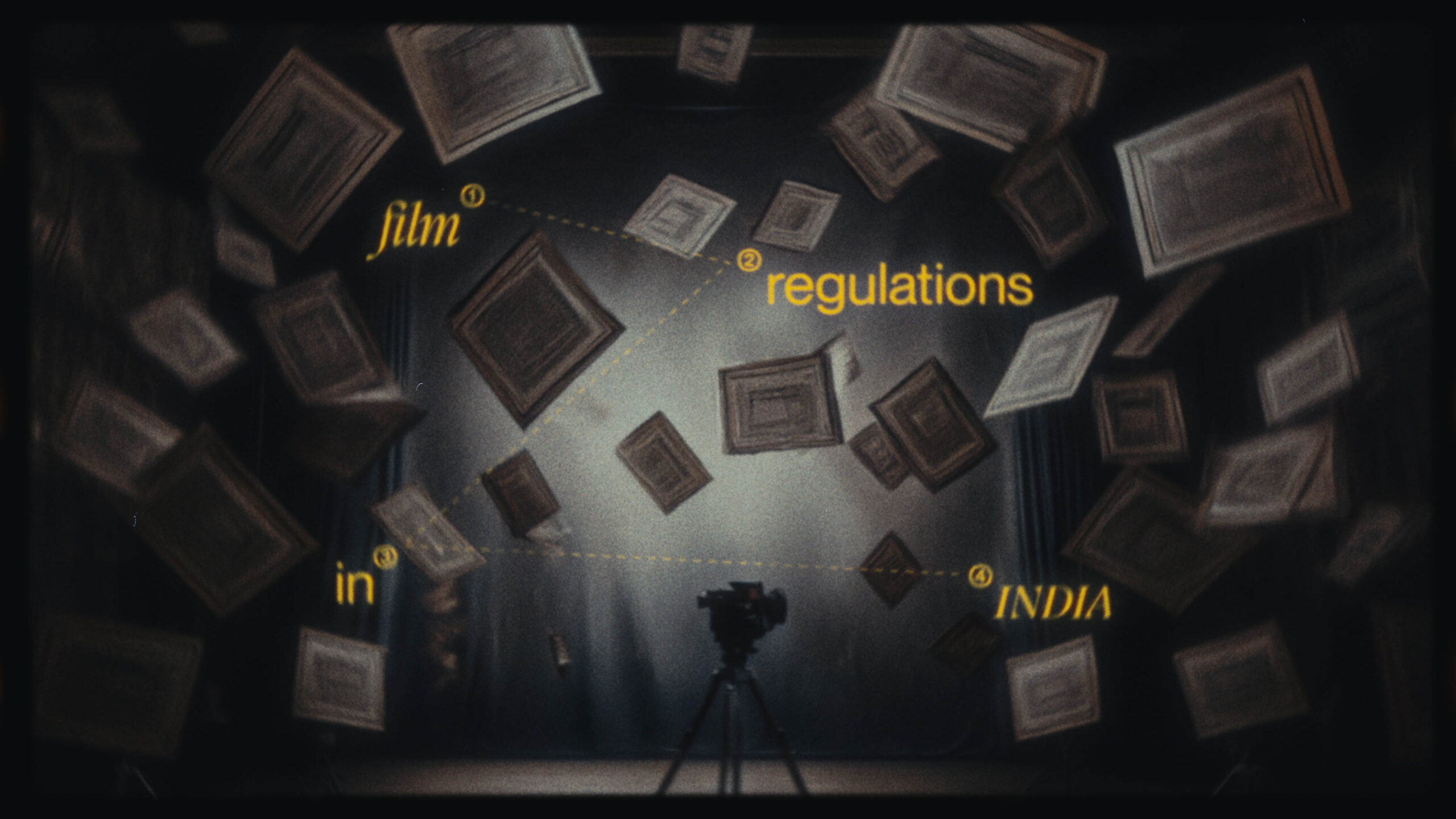
what are the film regulations in india?
As a global hotspot for filmmakers, India’s film industry covers a vast array of topics and genres. Whether it be an international or domestic production, a public showing of your film can do wonders for its profile. However, there are a number of requirements you’ll need to understand before you can show your film in India, with certifications and guidelines for filmmakers being extremely important. So, what are the film regulations in India?
In India, there are a number of film regulations that must be followed and films can only be publicly exhibited after they have been certified by the CBFC. If your film does not meet the requirements, you may be asked to edit or remove parts to bring it in line with the regulations. Using the provisions of the Cinematograph Act 1952, the CBFC provides a set of guidelines to be followed by filmmakers and four levels of certification for a project once completed. These rules don’t apply to online streaming services, like Netflix, however.
Read on to find out more about film regulations in India and how they may alter your future projects.
why are film regulations necessary?
According to the Central Board of Film Certification (CBFC), a total of 15 million people see films every day in India, either on television or at one of over 13,000 cinemas. This equates to the entirety of the Indian population every two months.
With such a thriving industry, filmmakers strive to achieve the best returns on their project, keeping in mind their fierce and growing competition. The CBFC states that this could encourage filmmakers to be braver with their content, “which may appeal to some, but may be unacceptable to a large section of people”.
The CBFC says that, whilst there are no certifications applied to published material, it was necessary for the film industry. The effect of the “audio-visual medium” is described as being far stronger than that of the printed word, “particularly on the impressionable minds of the children”.
The board goes on to explain that a 1989 Supreme Court judgement believed certifications to be necessary because of the strong impact of “the combination of act and speech, sight and sound in semi-darkness of the theatre with elimination of all distracting ideas”.
Films are viewed as having the opportunity to encourage violent or good behaviour, incomparable to other forms of communication. Certification plays a small part in regulating this industry, with citizens asked to step in and report violations to the police, allowing officers to focus on other tasks.
is there an agency in charge of film regulations in india?
Yes, the Central Board of Film Certification (CFBC) is responsible for regulating the film industry in India. It provides films with certificates based on their content, considering factors like violence, swearing, and sexuality. The CFBC regulates the public exhibition of films, meaning those shown in cinemas or on television, in order to keep the film industry responsible, sensitive to society’s values and ensure it provides a clean and healthy environment. They do not have governance over online streaming services, like Netflix, for example. Films can only be shown in public after they have been certified by the CBFC and edited to meet their guidelines.
what are the CBFC's certificates for films?
The CBFC currently issues four different certificates for the public exhibition of films in India. They are as follows:
- ‘U’ certificate:
Films with this certification have no restrictions on their showing in public, and are often family-friendly and suitable for children. They contain universal themes, like education, family, drama, romance, sci-fi, or action. U certified films can also contain mild violence, but it cannot be prolonged, and very mild sexual scenes with no traces of nudity or sexual detail.
- ‘U/A’ certificate:
These films can contain moderate adult themes, but are not appropriate for children to view without parental guidance. They can contain moderate to strong violence, moderate sexual scenes (with traces of nudity and moderate sexual detail allowed), frightening scenes, blood flow and muted abusive language. The age threshold for this certificate was previously set at 12 years of age. In 2023, this was refined and three subcategories were set up: 7, 13 and 16 years old. Each comes with unrestricted public exhibition, but requires parental guidance for anyone under these respective ages.
- ‘A’ certificate:
Films with the A certification can be shown in public, but are restricted to adults over the age of 18. They may contain strong violence, explicit and strong sexual scenes and abusive language. Words which degrade any social group, like women for example, aren’t allowed, however.
- ‘S’ certificate:
Films with this certification can’t be viewed by the public. Only those associated with the topic, such as doctors or scientists, are allowed to view them.
can the CBFC's refuse to certify a film?
Yes, it’s possible that the CBFC can refuse to certify a film at all if your project doesn’t meet the following guidelines:
- Anti-social activities, like violence, must not be glorified.
- Criminal acts cannot be depicted.
- You must not show:
- Children involved in violent acts or abuse.
- Abuse or ridicule of those with mental or physical disabilities.
- Unnecessary depictions of animal cruelty.
- No unjustified violence, cruelty, or horror.
- No encouragement of alcohol consumption, drug addiction, or smoking.
- No vulgarity, obscenity, depravity, or double entendres.
- No scenes degrading women, including sexual violence.
- No unfair criticism of a race, religion, or other social group.
- Sectarian, obscurantist, anti-scientific, and anti-national attitudes cannot be promoted.
- The film should not affect relations with foreign countries.
- No national symbols or emblems, except in accordance with the Emblems and Names (Prevention of Improper Use) Act 1950.
understanding film regulations with Dot Films
Dealing with the legal requirements of showing your film in India can be intimidating, but they’re necessary to not only protect you and your project, but the public too. That’s why, here at Dot Films, we’re here to give you a hand from start to finish, with our production services and expert support. We can help with every aspect of filming, from initial estimates to location scouting, which is only helped by our local expertise.
If you’re having trouble understanding what you need to do to show your film in India, why not get in touch with us today and let Dot Films help out!
FAQs
do these film regulations cover posters?
No, the Cinematograph Act 1952 does not cover posters or advertisements relating to films. Restrictions on these materials are covered under common law, and are enforced by state governments and police. However, the Film Publicity Screening Committee was set up in 1990 to screen posters for obscenity and derogatory depictions of women.
Important Note: While not covered by the Cinematograph Act 1952, it is mandatory for all producers to show their certificate category in every piece of publicity material.
what are the penalties for violating film regulations?
Fines can be imposed for violating the film regulations set out by the CBFC. These will range depending on the violation, but may also include the forfeiture or seizure of an offending film.
who is responsible for reporting violations?
Whilst the responsibility of checking violations and enforcing any penalties falls on the police, the role of the general public in reporting these violations is extremely important. It allows the police to focus on the number of other matters they might face, whilst encouraging the public to act alongside their societal commitment.
share



